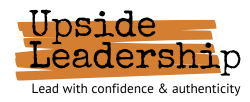How do I build my team’s performance? Build from Strengths
A big boost in your team’s performance may be right in front of you
Building a Strengths-based team can have a long-lasting impact on results.
As leaders, we are always looking for ways to boost the performance of our teams. We consider process improvements, investments in software and systems, consulting agreements, better hiring and other expensive and time-consuming approaches.
The fact is, many organizations could improve their performance with the people and technology they have in place. The answer is in building a strengths-based organization.
What does it mean to work in your strengths? Strengths are those tasks at which you are successful and in which where you feel energized and productive; where time flies and things flow and obstacles are faced head-on and dealt with resourcefully. You are working in your strengths when you derive a real sense of accomplishment and you’re ready to kick into it again whenever you’re asked. And, you’ll often find that people recognize you for your strengths. You’ll hear things like, ‘It was amazing how you accomplished X, no one could have done that like you did.’
The business results are remarkable and they aren’t a result of a years-long expensive consulting agreement; instead, the results are due to steering your team toward what each team member does best.
Research has supported this for years. A study published by The Marcus Buckingham Company followed 1.4 million employees spread among 50,000 teams at 192 organizations. Their finding: L people who have the opportunity to work in their strengths every day deliver double-digit gains in customer satisfaction, productivity and profitability. In addition, teams working in their strengths experience lower turnover (-25%), absenteeism (-37%) and safety incidents (lower by a whopping 48%). Source: The Marcus Buckingham Company
The bad news is that only about 17% of us — less than one in five — get to work in our strengths every day. The good news is building a strengths-based team can be done quickly and effectively, and without tremendous investments in new systems.
How Do I Grow a Strengths-based Team?
Developing a strengths-based team actually means following the path of least resistance; that is, being intentional about moving people into roles they are really good at. If that sounds too simple, just start with your next new project:
- First, identify all of the key tasks or activities attached to the project.
- Then sort out those tasks, not by title or function as you normally would, but instead, by strength. What skills are required to get this task done and who on my team has those skills? You might be amazed at how the project looks differently through this “strengths lens.”(Not sure what strengths your team members have? Ask them! They know deep down what kind of work excites them and what they’re inherently good at.)
- At your next planning meeting, list out all of the tasks in a project and ask folks if there are any roles people would like to take on. You will find people will raise their hands for work in their strengths.
If you need more assistance, great assessments are available for identifying strengths in an organization. StandOut, from The Marcus Buckingham Company, walks you through an online situation judgement test and then produces a comprehensive report of your strengths roles:; how you most naturally show up: what your edge or comparative advantage is; and how to apply them at work. Other tools, like Strengthsfinder from the Gallup organization, can also be used. These assessments are inexpensive and provide great platforms for discussing strengths within your organization.
What’s Wrong with Fixing our Flaws?
We get it from as early as grade school, and we’ve all heard it in our performance evaluations: ‘You’re already really good at A, B and C; now you’ll be just perfect if you fix D and E.’
In fact, the opposite is true.
Do you know how the great quarterback Peyton Manning trained in the off-season? If he were focused on improving in his development areas, he might work on his running — his ability to scramble away from rushing linebackers. Nope, in the off-season, Peyton would go work with his former college coach and his receivers on his passing. He knew where his strengths were and he built on them.
Manning is the NFL’s all-time leader in passing yards.
Certainly. you can improve on your weaknesses with practice and training. However, you will make much faster and greater progress by focusing on what you are truly good at.
In a now-famous 1950s experiment, the Nebraska School Studies Council was studying different methods of teaching rapid reading. As it turns out, the different methods of teaching were inconsequential (the teachers made the difference). But the researchers noticed something else: in this study of more than 6,000 tenth-graders, the students who were relatively weak readers at the beginning made clear gains; but the fast readers in the study improved much more (from 300 to about 2900 words per minute!). Source: ‘Investing in Strengths’, Clifton and Harder.
Think about your own experience: have you ever really moved an activity from an area of weakness to a real strength? You likely have worked hard to become capable at certain things because they were important to you, but did you become a star?
The key to growing a strengths-based team is being intentional about it and letting go of the myth that we will improve the most by focusing on the tasks at which we are weakest. In fact, we will improve the most when we focus on those activities which are our strengths.
Wait, Someone Has to Do the Grunt Work
But what about the tasks within my job description that I don’t like to do? Someone has to do them, right?
Finding time and opportunity to work in your strengths every day is important, but it doesn’t require all of the work to be strengths-driven. Consider first whether the task is truly mandatory to your operation; if so, could you team up someone else do it more joyfully? Or could you use one of your strengths to render the job easier? Further, by using your team to look at all the tasks and workflows from a strengths-based perspective, you’ll often find that what is grunt work to one person might be exciting and fulfilling to another.
The Impact of a Team Working in its Strengths
Once you have a team which is working in its strengths more often, you are likely to see a more productive team. Moreover, you’ll notice how engaged and enthusiastic and resourceful your people are. They will learn to develop alternative solutions and solve problems more easily because they are approaching things from a position of confidence and enthusiasm. People will volunteer for new assignments that fall under their list of strengths.
As a leader, you will also likely find that people want to work with you, that employees are clamoring to be selected for your team. Why? Because on your team, people get to do those things they were born to do!
Andy Scantland is an Executive Coach trained in Strengths and principal at Upside Partners, which provides leadership development and executive coaching for growing businesses. Andy can be reached at ascantland@upside-partners.com.









